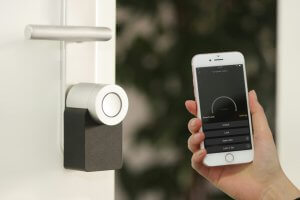Simple Home Network Security Tips for Everyone

Simple Home Network Security Tips for Everyon
Even if you don’t consider yourself tech-savvy, there are important steps you can take to secure your home network. One essential practice is to change the default passwords on all internet-connected devices in your home—this includes not only your Wi-Fi router, but also smart TVs, printers, and other connected gadgets. It’s equally important to keep the firmware for all these devices up to date to patch any known vulnerabilities.
Be mindful of which devices you allow online. Just because a device—like your refrigerator—can connect to the internet doesn’t mean it needs to. Many smart devices collect and share user data, and smart TVs in particular have been known to transmit viewing data to advertisers. Take the time to review the privacy settings of all your connected devices and disable any data-sharing features you’re not comfortable with.
If you use smart home security gear such as Ring or Arlo cameras, enable two-factor authentication on your accounts for added protection, and ensure the devices are kept updated. Many of these services offer automatic updates, so opt into them when possible.
For those working remotely, be sure to connect to your company’s VPN during work hours to help secure sensitive information. When using public Wi-Fi away from home—especially on a work device—connect through a trusted VPN service to avoid exposing your data.
For the Tech-Savvy: Advanced Home Network Practices
If you have a background in IT or network administration, there are additional steps you can take to secure your home setup. First, upgrade your home Wi-Fi to use WPA3, the newest wireless security protocol. WPA3 offers stronger encryption and better resistance against password-based attacks compared to its predecessor, WPA2.
Another smart move is to segment your home network. By setting up virtual LANs (VLANs) or using filtering tools, you can isolate devices into different groups. For instance, keep your smart home appliances—like connected thermostats or refrigerators—on a separate network from your security devices, such as smart doorbells or surveillance cameras. It’s also wise to separate your work-related devices from general household gadgets to minimize the risk of cross-device threats.
If you’re looking for more practical advice on keeping your home network secure, dive into guides focused on smart home safety and cybersecurity best practices.
Newer Articles
- Microsoft Warns of Malware Campaign Linked to Pirated Streaming Sites
- Amazon’s Spring Sale Brings Hot Laptop Deals: Grab the 2024 Microsoft Surface Laptop for Less
- Your Guide to the Best Live Betting Experiences in India (2025)

